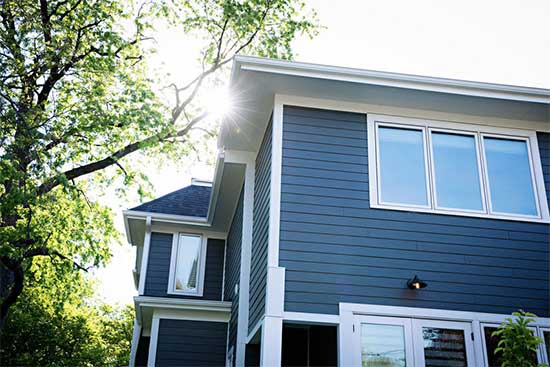It’s getting cooler and eventually, the weather will turn downright cold. We live in Wisconsin so this is no surprise to anyone. It’s also the only time of year when people start to think about the quality of their windows. Adding Low-E windows to your next upgrade, addition, or remodel project is a must.
I think it’s fair to say that if you own a home you already know that a wood frame is less prone to heat and cold transfer than an aluminum one since metals conduct temperature much more easily than wood. Touch metal in the winter and it’s cold. But that doesn’t mean wood is always the best choice for a utility-bill-friendly window. There are a variety of materials available for window frames, and each has positive and negative aspects. It’s up to you to decide what’s best for your style of home and your budget.
Vinyl: Vinyl is a less expensive material but that doesn’t mean it has to be “cheap.” A well-constructed, properly installed vinyl window can be a practical choice for many reasons while still offering excellent energy efficiency measures through insulated glass and tight construction that reduces air leakage. The real downside to vinyl windows suggested by Southern custom shutters – Greensboro is the choice of colors available and the simple fact that people are not particularly fond of how vinyl looks in their home or remodel. When we remodeled our lower level we had small basement windows we wanted to replace and the only option was vinyl. We made it work but I would have preferred something different.
Wood: Wood windows offer the best insulative value. That’s an easy and correct thing to say but, they also require more upkeep than vinyl, wood-clad or aluminum frames. Because of the potential for rot, they may not be the best choice for extremely humid or rainy climates. Remember, we live in Wisconsin and it rains and snows and it’s humid. A well-built wood window will stand the test of time, however: many original wood windows in older homes are still in good shape thanks to the high-quality cut and species of wood used,
Aluminum: While not the top-performing material in terms of heat transfer and loss, aluminum windows are practical in rainy, humid climates, and they meet just about every code requirements you can think of.
 The glass is where the rubber meets the road.
The glass is where the rubber meets the road.
While the material each window is constructed from is important, the reality is most recent window-related buzzwords are all about the glass. This is where all the science has gone into making windows more energy efficient. So what does this mean for you as the homeowner?
Homeowners who have built new homes in all price ranges, from bare-bones-basic structures to million-dollar-plus projects will spend a great deal of time and money on the best windows. Thos windows are a double-paned window with Low-E glass, with a vacuum-sealed argon fill. When you are looking into replacing windows this is what you want. But, it’s an extra $50.00 per window but they really do make a difference in a home’s utility bills. You can even add denser gas and go the triple pane route but you’re s[ending money that you will not see a great return on your investment.
So what exactly are you getting when you choose a window with the different low E-glass and other options? Low-E, argon-filled, double-paned windows provide significantly more insulation than a single-pane window. These windows protect the inside of the house from the sun’s heat and UV rays in the summer, and they prevent heat from escaping during winter. From the standpoint of energy efficiency and value, these types of windows make a lot of sense.
Triple-paned windows may be notably more efficient in especially harsh winter climates, they can also reduce the window’s visibility and light transmittance but I think that’s a very small price to pay and once you’re inside the house your eyes adjust to the difference quickly.
When shopping and doing your research on windows the nice thing is that you shouldn’t have to look any further than a window’s glass to find out what the unit’s efficiency features are. All windows in the voluntary Energy Star program will have a sticker on them with ratings from the National Fenestration Rating Council (NFRC). To qualify for Energy Star status, window manufacturers have to meet standards on these two main metrics:
U-value: measures a window unit’s resistance to heat loss
Solar Heat Gain Coefficient (SHGC): measures how much heat enters a home through the glass.
For both U-Value and SHGC, the lower the number, the better the window should perform.
Finally, don’t overlook the importance of proper installation. Even the most expensive window unit won’t perform effectively if it’s not installed correctly. Let the experts at Exterior Renovations work with you and help with your window selection in your next remodeling project or replacement windows in your current home.


 The glass is where the rubber meets the road.
The glass is where the rubber meets the road.